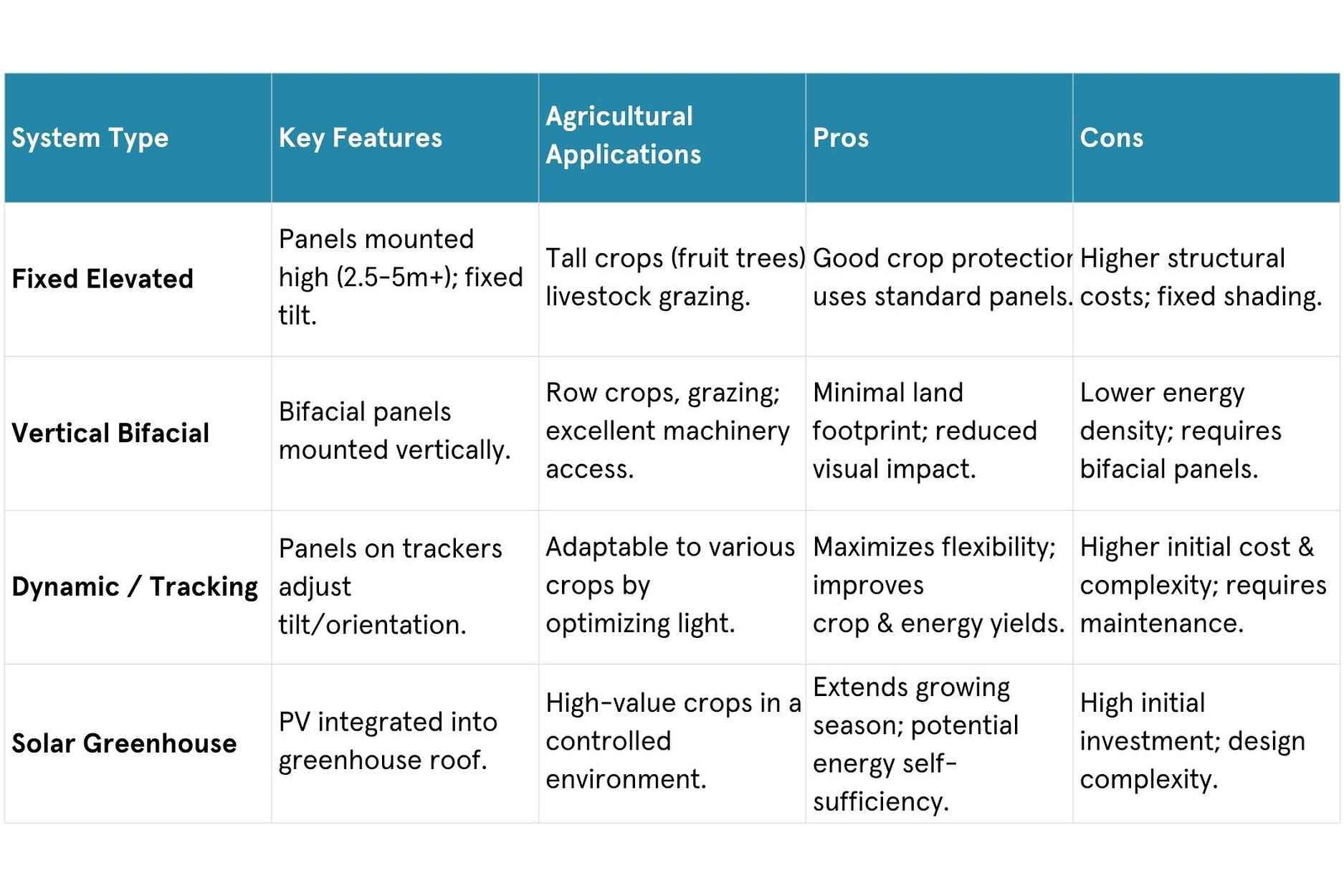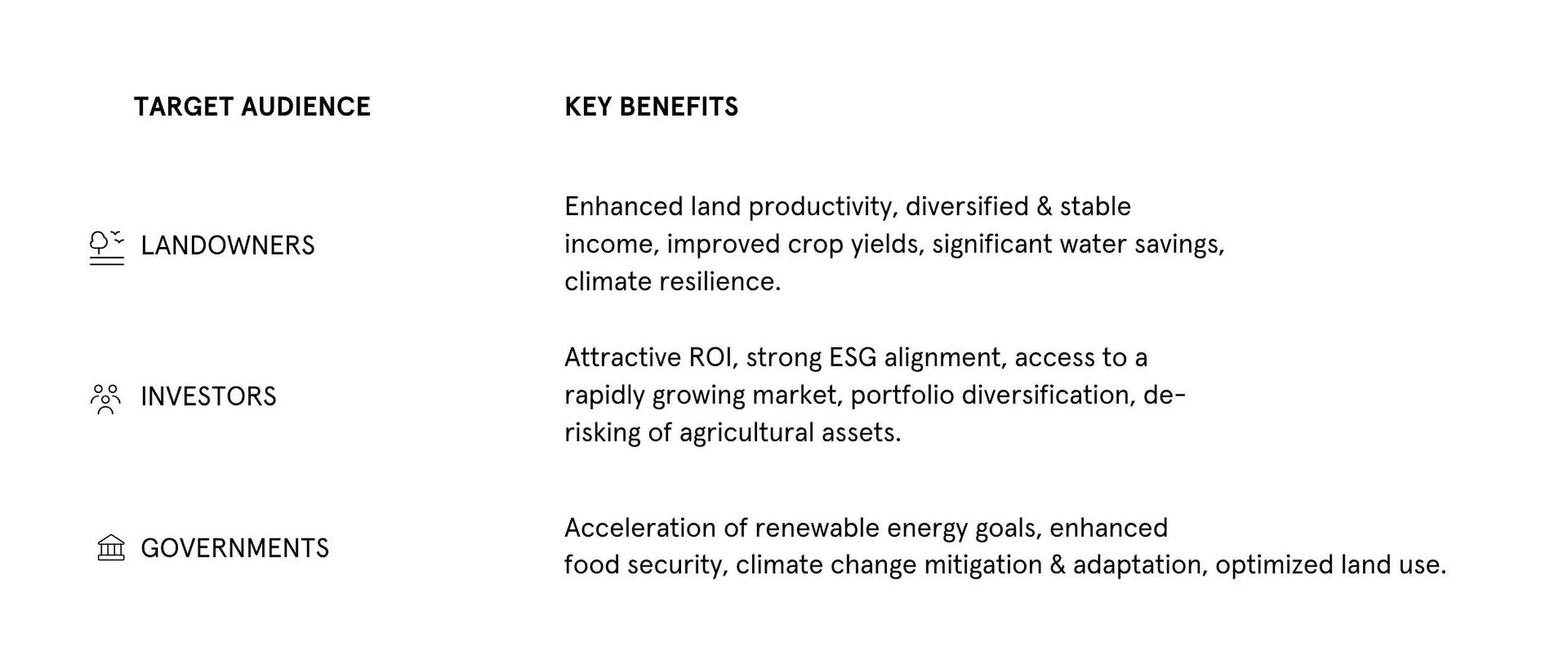The Dual Power of Sun and Soil: An Introduction to Agrivoltaics
The global pursuit of a sustainable future grapples with two immense challenges: clean energy production and food security. Historically, these objectives have vied for the same critical resource: land. However, a revolutionary approach, agrivoltaic farming, offers a compelling alternative. This innovative solution seamlessly integrates solar energy generation with agriculture, fostering a powerful synergy on the same land.
So, what is agrivoltaic farming? Also known as agrisolar or agrophotovoltaics (APV), it is the strategic, simultaneous use of land for both solar power and farming. This isn't just about placing solar panels on a farm; it's about designing an integrated system where crops or livestock thrive alongside renewable energy production.
This dual-use approach directly tackles land-use conflicts, offering a path for landowners to maximize their property's value, for investors to fund truly sustainable projects, and for governments to meet both energy and agricultural goals. The results are more than just coexistence, they're synergistic. The solar panels can create a more favorable microclimate for crops, and the plants, in turn, can help cool the panels, boosting their efficiency. This means the combined output can be significantly higher than if energy and agriculture were pursued separately, a concept measured by a Land Equivalent Ratio (LER) that often exceeds 1, demonstrating a powerful boost in overall land productivity.
How Agrivoltaics Works - The Science of Synergy
The magic of agrivoltaic farming lies in the modified microenvironment created by the solar panels. This symbiotic relationship creates tangible benefits for both the farm and the solar installation.
Cooler Days and Conserved Water:
Solar panels provide partial shade, which significantly lowers daytime temperatures on the ground, often by 2 to 5 degrees Celsius. This buffer protects crops from heat stress and sun damage, a critical advantage in increasingly hot and arid climates. This shading, combined with reduced wind speed, also dramatically cuts down on evapotranspiration (water loss from soil and plants). The result? Water savings of up to 30-50%, reducing irrigation needs and improving soil moisture.
This works because of a principle called the "light saturation point." Plants can only use so much sunlight for photosynthesis. Any excess sunlight simply increases their water demand. Agrivoltaic systems can be designed to give plants their optimal dose of light while the panels harvest the rest for electricity.
Healthier Soil and Thriving Biodiversity:
The improved moisture and moderated temperatures contribute to healthier soil structure, better nutrient retention, and reduced erosion. Furthermore, agrivoltaic sites can be designed as havens for biodiversity. By planting native vegetation or flowering plants under and around the panels, these systems can become vital habitats for pollinators like bees and butterflies, boosting local ecosystems and benefiting surrounding agriculture.
A Two-Way Street: Plants Help Panels, Too:
The relationship is reciprocal. Through evapotranspiration, the vegetation beneath the solar arrays releases water vapor, creating a cooler microclimate around the panels. In hot conditions, this natural cooling effect can improve the panels' energy conversion efficiency by as much as 10%.
Agrivoltaics is not a one-size-fits-all solution. The versatility of the approach is reflected in a variety of system designs, each tailored to specific agricultural needs, climates, and economic goals.
A common design where panels are raised high above the ground (2.5 to 5 meters) on fixed racking. This provides ample clearance for farm machinery and is ideal for taller crops like fruit trees or for livestock grazing.
An innovative design where two-sided (bifacial) panels are mounted vertically, often in north-south rows. This minimizes the ground footprint, allows easy passage for machinery, and captures morning and afternoon sun on both panel faces.
These advanced systems feature panels that track the sun's movement. They can be programmed to optimize light for either crop growth or energy generation, offering maximum flexibility and control over the microclimate.
This approach integrates semi-transparent or spectrally selective photovoltaic panels directly into the greenhouse roof. The energy generated can power the greenhouse's heating, cooling, and lighting systems, creating a self-sufficient, year-round growing environment.
The best design depends on a careful analysis of the crop type, local climate, farming practices, and project goals. An apple orchard will have different needs than a sheep pasture or a lettuce farm, highlighting the importance of customized, expert-led design.

The Win-Win-Win: Benefits for Farmers, Investors, and the Planet
Agrivoltaic farming presents a compelling value proposition by integrating agriculture with solar energy. It maximizes land use efficiency, increases farm profitability, supports clean energy goals, and delivers economic, environmental, and social benefits to diverse stakeholders.
Diversified, Stable Income:
A new, long-term revenue stream from energy sales complements traditional farm income, buffering against market volatility and weather-related risks.Enhanced Land Productivity: Get more value from the same acreage. Studies show agrivoltaics can boost overall land-use efficiency by 60-70%.
Improved Crop Yields:
For suitable crops like lettuce, tomatoes, peppers, and berries, the moderated microclimate can lead to higher-quality yields and reduced water usage.
Climate Resilience:
The system provides physical protection from extreme weather like hail and intense sun, while water savings make the farm more resilient to drought.
Valorize Marginal Land:
Turn less-productive plots into valuable assets by generating revenue from solar energy while still supporting grazing or pollinator habitats.
Agrivoltaics aligns financial returns with critical environmental, social, and governance (ESG) goals.
Attractive ROI in a Growing Market:
The global agrivoltaics market is projected to reach over $9 billion by 2030. Solar farm investments have shown strong returns, often outperforming traditional asset classes.
Strong ESG Credentials:
Projects directly contribute to renewable energy generation, water conservation, food security, and rural economic development, checking all the boxes for impact investing.
De-Risking Agricultural Investment:
The stable, predictable revenue from energy sales provides a financial buffer against the inherent risks of agriculture, making the overall venture more secure.
Agrivoltaics is a powerful policy tool for achieving strategic national and global objectives.
Accelerate Renewable Energy Targets:
A study by Oregon State University found that converting less than 1% of U.S. agricultural land to agrivoltaics could meet 20% of the nation's total electricity needs.
Enhance Food Security:
Keeping land in agricultural production while generating power supports local and regional food systems.
Climate Change Mitigation and Adaptation:
The systems generate clean energy (mitigation) while making farms more resilient to climate impacts (adaptation).
Optimize Land Use: Directly resolves conflicts over land, especially in densely populated regions, by enabling two essential activities to share the same space.

Summary of Agrivoltaic Benefits
While the benefits are compelling, adopting agrivoltaics requires careful planning to navigate potential challenges.
Upfront costs can be 10-30% higher than for traditional ground-mounted solar due to more complex mounting structures and installation.
Successful projects require a blend of expertise in solar engineering, agricultural science, and local farming practices.
Not all crops are ideal. Success hinges on selecting shade-tolerant species or designing the system to provide adequate light for sun-loving crops.
The regulatory landscape is still evolving. Clear policies, streamlined permitting, and supportive incentives are crucial for encouraging widespread adoption.
The Future of Farming is Bright (and Smart)
The field of agrivoltaics is evolving rapidly, driven by technological innovation. The future is "Precision Agrivoltaics," where smart systems use AI, IoT sensors, and data analytics to optimize operations in real-time.
Imagine a farm where:
- Advanced solar panels (transparent, bifacial, or wavelength-selective) are tailored to crop needs.
- AI-driven tracking systems adjust panel angles to provide the perfect amount of light throughout the day.
- IoT sensors monitor soil moisture, crop health, and energy output, feeding data to predictive models.
Automation and robotics handle tasks like planting, weeding, and panel cleaning.
This data-driven approach will unlock even greater efficiencies, maximizing the synergistic potential of combining sun and soil. With growing global adoption and strong government support in regions like North America, Europe, and Asia, agrivoltaics is moving from a niche concept to a mainstream solution for a sustainable future.
Partner with VIRIDI to Lead the Way
At VIRIDI, we believe agrivoltaic farming is a cornerstone of a sustainable future. As a world leader in renewable energy solutions, we are committed to pioneering the integration of agriculture and solar energy.
Our approach is data-driven, farmer-centric, and built on global best practices. We work collaboratively with landowners to design and implement tailored agrivoltaic systems that meet their agricultural objectives while delivering clean, reliable energy. We offer comprehensive services, from initial site assessments to complete project development and management.
The potential to transform our land, enhance agricultural resilience, and accelerate the clean energy transition is immense. Whether you are a landowner, investor, or policymaker, agrivoltaics offers a compelling path forward.
Ready to explore the dual power of sun and soil? Contact VIRIDI today to learn how our agrivoltaic solutions can help you achieve your goals.
